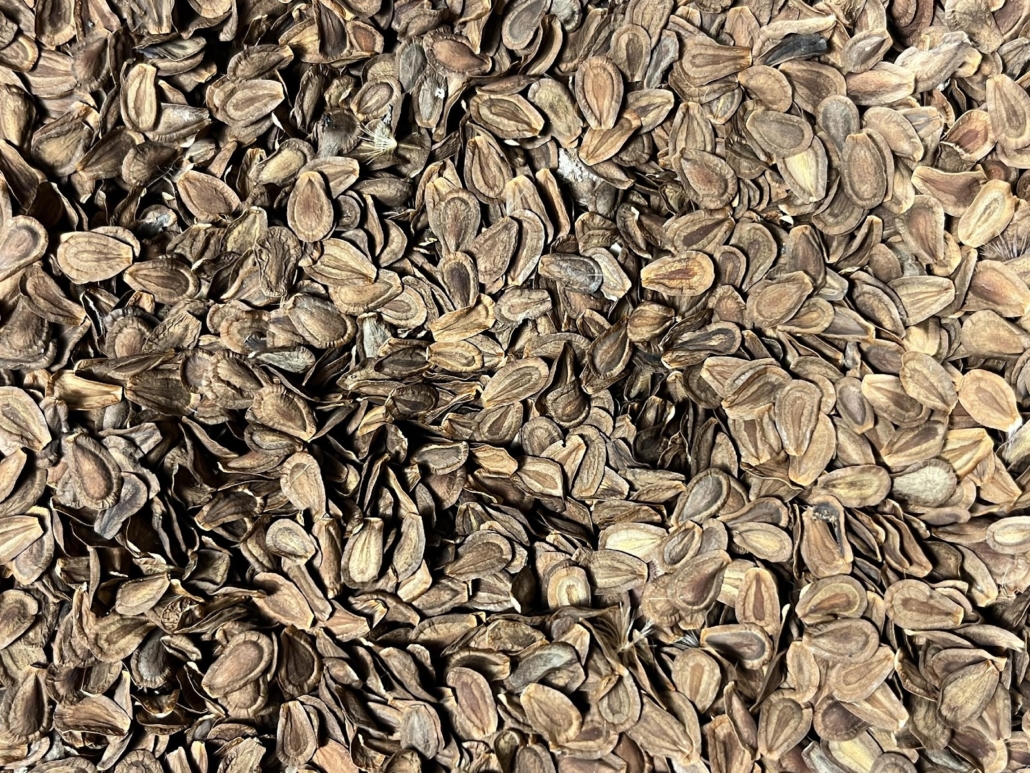The Virginia Native Seed Pilot Project is working to create a network of farmers that can collectively serve as a commercial source of Virginia-ecotype native seeds for large-scale revegetation and restoration projects.
The Problem
Across Virginia, there is a huge demand for native seeds to restore and revegetate degraded land, from VDOT roadside revegetation projects and plantings on utility-scal solar farms to privately owned wildflower meadows, grassland restoration projects, and native forage paddocks for grazing. Grasslands in Virginia are home to some of the most diverse plant communities in the state and are in desperate need of conservation and restoration. Unfortunately, the supply of native seeds does not meet the demand. Seeds of some native species with out-of-state genetics can be purchased from seed companies. But many plant species that are commonly found in native grasslands in Virginia, and that provide important resources to pollinators, are not yet sold by seed companies. Plants with genetics from other parts of the country may bloom at a different time or have different physical traits than the local plants pollinators evolved with, although much research still needs to be done in this area. Establishment is also improved by using plants that are adapted to local conditions.
The Solution
In 2022, we teamed up with the Virginia Department of Conservation and Recreation, Ernst Conservation Seeds, Virginia State University, the Nature Conservancy, and other partners to start a project to launch the native seed industry in Virginia. We received a two-year NRCS Conservation Innovation Grant, which allowed us to hire a Native Seed Project Coordinator and partly fund a new greenhouse. In the early stages of the project, we are working with volunteers to collect seeds of wildflowers and grasses from unplanted sites across the state and we have been growing seedlings from these wild-collected seeds in greenhouses. We then work with farmers who are interested in diversifying their operations to plant these seedlings so that they can go into commercial seed production. This will create a new high-value crop that rural farmers with small properties can take advantage of.
The Process
Focal Species (Phase 1)
(Click on species name to view information on identification and growing recommendations)
1. Butterfly Weed – Asclepias tuberosa
2. Calico Aster – Symphyotrichum lateriflorum
3. Common Milkweed – Asclepias syriaca
4. Field Thistle – Cirsium discolor
5. Grass-leaf Blazing Star – Liatris pilosa
6. Grey Goldenrod – Solidago nemoralis
7. Hyssop Skullcap – Scutellaria integrifolia
8. Late Purple Aster – Symphyotrichum patens
9. Little Bluestem – Schizachyrium scoparium
10. Lyre-leaf Sage – Salvia lyrata
11. Maryland Golden Aster – Chrysopsis mariana
12. Panicled-leaf Tick-trefoil – Desmodium paniculatum
13. Purpletop – Tridens flavus
14. Rose-pink – Sabatia angularis
15. Slender Mountain-mint – Pycnanthemum tenuifolium
16. Smooth Beard-tongue – Penstemon laevigatus
Get Involved:
We are currently seeking farmers in the Coastal Plain (especially in King and Queen and adjacent counties) and the northern Piedmont (Fauquier and adjacent counties) to join this project. We are also looking for volunteers to help with seed collection in the wild and harvesting farmers’ seed plots. Please email Rachel Martin at rmartin@cliftoninstitute.org to get involved!
Additional Resources:
Check out this recorded webinar by Isaac Matlock, which covers methods for collecting different types of plant seeds, his approach to processing seeds, germination requirements, and commercial-scale seed propagation.














